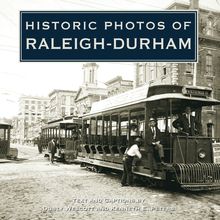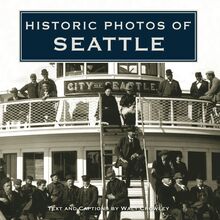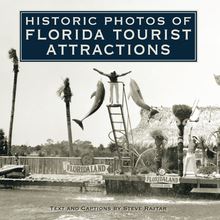Historic Photos of Baltimore , livre ebook
215
pages
English
Ebooks
2008
Vous pourrez modifier la taille du texte de cet ouvrage
Obtenez un accès à la bibliothèque pour le consulter en ligne En savoir plus
Découvre YouScribe en t'inscrivant gratuitement
Découvre YouScribe en t'inscrivant gratuitement
215
pages
English
Ebooks
2008
Vous pourrez modifier la taille du texte de cet ouvrage
Obtenez un accès à la bibliothèque pour le consulter en ligne En savoir plus
Publié par
Date de parution
01 août 2008
Nombre de lectures
1
EAN13
9781618586025
Langue
English
Poids de l'ouvrage
8 Mo
Publié par
Date de parution
01 août 2008
Nombre de lectures
1
EAN13
9781618586025
Langue
English
Poids de l'ouvrage
8 Mo
HISTORIC PHOTOS OF
BALTIMORE
T EXT AND C APTIONS BY M ARK W ALSTON
In July 1913, photographer Frederick Mueller climbed to the top of the Emerson Bromo-Seltzer Tower to take a complete circle view of Baltimore. Designed by Joseph Evans Sperry, the tower, completed in 1911 and at the time the tallest building in the city, was the brainchild of Captain Isaac Emerson, who had organized the adjacent Bromo-Seltzer Company in 1891 to produce his headache remedy. A 51-foot revolving replica of a bottle of the celebrated nostrum originally surmounted the tower.
HISTORIC PHOTOS OF
BALTIMORE
Turner Publishing Company
200 4th Avenue North Suite 950
Nashville, Tennessee 37219
(615) 255-2665
www.turnerpublishing.com
Historic Photos of Baltimore
Copyright 2008 Turner Publishing Company
All rights reserved.
This book or any part thereof may not be reproduced or transmitted in any form or by any means, electronic or mechanical, including photocopying, recording, or by any information storage and retrieval system, without permission in writing from the publisher.
Library of Congress Control Number: 2008905530
ISBN-13: 978-1-59652-316-6
Printed in the United States of America
09 10 11 12 13 14 15 16-0 9 8 7 6 5 4 3 2
C ONTENTS
A CKNOWLEDGMENTS
P REFACE
T HE R ISINGEST T OWN (1840-1903)
D ISASTER C ONVERTED (1904-1939)
L IBERTY S HIPS TO H ARBORPLACE (1940-1980)
N OTES ON THE P HOTOGRAPHS
The Baltimore Athenaeum Club, an association of the city s elite formed to promote literary and scientific learning, claimed as its home the residence of William Howard, constructed between 1828 and 1830 at the intersection of Charles and Franklin streets. Howard was not only a noted physician, but also a natural historian, engineer, surveyor, and amateur architect who traveled the world seeking history s great buildings. He hired architect William Small to design his classically inspired residence, with its heavy, pedimented portico supported by four columns.
A CKNOWLEDGMENTS
With the exception of cropping images where needed and touching up imperfections that have accrued over time, no other changes have been made to the photographs in this volume. The caliber and clarity of many photographs are limited by the technology of the day and the ability of the photographer at the time they were made.
This volume, Historic Photos of Baltimore , is the result of the cooperation and efforts of many individuals, organizations, and corporations. It is with great thanks that we acknowledge the valuable contribution of the following for their generous support:
Baltimore Camera Club
Baltimore Museum of Industry
Enoch Pratt Free Library, Central Library/State Library Resource Center, Baltimore, Maryland
The Frances Loeb Library, Harvard Graduate School of Design
Library of Congress
The New-York Historical Society
P REFACE
Every day, the average American is exposed to hundreds of photographic images, in newspapers, magazines, books, advertising, web sites-photos both publicly displayed and privately shared among family and friends. Photographs inform us of occurrences around the world. They capture personal moments. They illustrate, identify, educate, entertain, inspire. They show us the distant reaches of the universe and the smallest particles of life.
From its beginning in the 1830s, when the French painter and printmaker Louis-Jacques-Mand Daguerre first discovered a chemical method to fix an image on a sheet of highly polished, silver-plated copper, photography radically changed how the world saw itself. Now there was a scientific method of showing rather than describing, a means of presenting life as it is, rather than filtering it through painting or drawing. A mirror with a memory, early admirers called it.
Some may argue how much of a mirror photography truly is, whether it accurately reflects reality or is more a display of the photographer s personal bias-the subjects posed, positioned, manipulated, cropped to suit a particular idea or intention. As a historical record, however, photography provides a resource of inestimable value to anyone attempting to decipher a society at a particular point in time. It may not present a complete picture, but it provides details unobtainable in other references and, when combined with the written historical record, significantly enhances our understanding of the past.
In the beginning, photography was a specialized endeavor, reserved for a handful of artisans with the wherewithal to purchase equipment and supplies and the knowledge of how to produce the images. As a result, daguerreotypes, the earliest form of photography, were reserved for portraiture of the well-off-stiffly posed because of the length of time the subject had to stay still-or for capturing important landscapes or structures in the man-made environment. John Plumbe s 1846 daguerreotype of Baltimore s Battle Monument reflects photography s early emphasis on the significant rather than the mundane. Other methods of processing would appear over the next decades, from glass plates to the tintype, patented in 1858, which substituted a less costly iron plate. Traveling tintype photographers now could conduct business out of the backs of wagons, taking pictures-for a price. The portability of the process expanded the range of possible subjects, while its relative inexpensiveness widened its accessibility.
Yet, by the 1880s, further improvements in processing would bring about a revolution in photography, and finally put a camera in the hands of the masses. George Eastman would develop a flexible alternative to the cumbersome photographic plates and toxic chemicals then in use: a thin strip of paper to which dry gel had been applied-the first practical film. Then, in 1888, Eastman s Kodak camera appeared, so simple that it did away with the specialized knowledge required to take a photograph. The user just pushed the button and left the complex process of developing the image to others. In 1901, with the appearance of Eastman s inexpensive Kodak Brownie, the era of popular photography began in earnest.
Technical advances during the latter part of the nineteenth century, as well, made it possible for photographers to clearly capture moving objects, allowing a greater spontaneity, producing on-the-spot photos of fast-breaking events. The series of images of Baltimore s Great Fire of 1904, taken just after fire fighters responded to the first alarm and documenting the spread of the fire minute by minute, provide a remarkable record of the catastrophic event.
With a camera in every hand, photography became no longer the province of the few, and the photos taken began to reflect every aspect of life, the common as well as the extraordinary. A steamship docking at a pier, a policeman directing traffic, shoppers at the market, a woman scrubbing the stairs of her row house, all these familiar sights of everyday life in Baltimore were now recorded, preserved in photo albums, available for viewing far into the future.
Additionally, advances in reproductive technologies, in particular the development of the halftone printing process in the 1890s, allowed these photographs to be inexpensively shared through the pages of newspapers, magazines, books, and more, thus expanding their use as a means of telling stories to the wider public. Photojournalist Lewis Hine would turn to photography as a key way of displaying the working conditions of children in the first decades of the twentieth century; his images of Baltimore children toiling in canning factories and picking fruit on area farms would be a major impetus for reform.
The advent of digital cameras further extended photography s reach-history has yet to determine whether the ephemeral nature of pixels on a screen will be preserved in any readable form, if saved at all for future generations to view and ponder. The images presented on the following pages, however, represent the early days when a photograph was a physical object-and by their reproduction in this book present in tangible form a record, however partial, of 125 years of life in Baltimore.
- Mark Walston
The beginnings of architectural cast iron, which experienced nationwide popularity in the mid-nineteenth century, had strong Baltimore connections, due in part to the existence of a number of ironworks already operating around town. The Gilmore House, built about 1840 and later known as the St. Clair Hotel, decorated Monument Square by its addition of an elaborately ornamental, two-story cast-iron front, seen here in 1894.
T HE R ISINGEST T OWN
(1840-1903)
Advantageous geography gave rise to early Baltimore. The broad basin formed by the confluence of the Patapsco River and the Chesapeake Bay prompted its initial chartering by the Maryland Assembly in 1729, the intention being to create around the natural harbor a new port to serve the region. Equally attractive was the town s location where the rocky Piedmont descended to the Coastal Plain, providing swift-moving waters to power fledgling industries, particularly the city s flour mills.
Growth came rapidly to the port town, and in 1798, as Baltimore s population approached 26,000, President George Washington declared it the risingest town in America. By 1830, the textile mills sprouting along Jones Falls produced over 80 percent of the nation s cotton duck, while scores of other enterprises turned out an inestimable amount of goods.
Perhaps the most significant occurrence in the city s early history came with the 1828 founding of the Baltimore and Ohio (B O) Railroad, which provided local industries with a cheap and rapid means of transport. Water-oriented transportation would initially keep pace with the rails, with steamships carrying products and people across the Atlantic by 1865.
Baltimore s progress would be dimmed by the Civil War but not extinguished, for, as the only southern port still under Federal control, it became a major shipping cen














